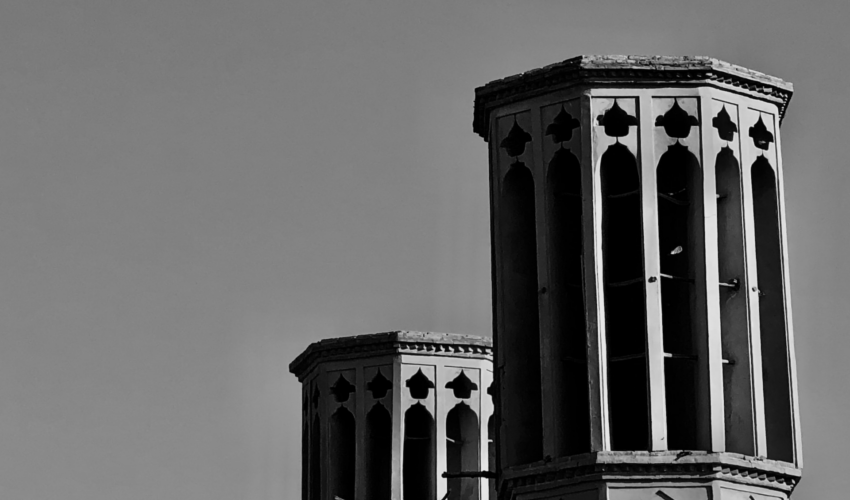In Texas, whether in the heat of July or in late November as you gather to celebrate Thanksgiving with loved ones, you may still have air conditioning on your mind. You may be surprised to learn that as few as three or four generations ago, air conditioning was more luxury than commonplace. Read on to learn more about the innovations that brought air conditioning to the masses.
Ancient Times: Architectural Cooling Methods
Since the dawn of time, humans have looked for innovative ways to beat the heat. Prehistoric people often lived in caves or stone outcroppings, where it tended to be cooler. In Ancient Egypt, some people harnessed the power of evaporative cooling by hanging wet reeds and cloth in windows, lowering the temperature indoors.
In an attempt to further cooling advancements, architectural elements such as the windcatcher, which relied on a tall shaft to catch cool wind from high above a building, then channel it down into the building’s interior, began rising in popularity. This ventilation system was so effective that Persians quickly began adding it to houses and water storage buildings.
Meanwhile, the Romans often designed their buildings with intricate water systems, or aqueducts, to handle air cooling. The cold water from aqueducts was pumped through the walls of wealthy people’s homes, cooling the air inside; this water was then used for drinking, irrigation, and public baths and fountains.
These techniques kept buildings cool for centuries and are still used today in some areas of the world.
19th Century: Refrigeration Technology
Although he’s most well known for other inventions, Ben Franklin—along with English mathematician John Hadley—experimented with evaporation principles in the early 1800s, creating the first documentation of the theory of air conditioning. Then, Michael Faraday discovered the principle of gas compression and expansion. This marked the beginning of the gold standard in modern air conditioning: artificial refrigeration.
By the mid-19th century, mechanical engineer Jacob Perkins and Florida physician John Gorrie had made major inroads into the concept of artificial refrigeration. In 1829, Perkins patented a vapor-compression refrigeration system that relied on hermetic tubes to cool the air. Later, Gorrie invented the first ice machine, which was actually intended to fight yellow fever and infection by lowering the air temperature in the hospital rooms; the true cause of yellow fever–mosquitoes–hadn’t yet been identified, but many made a connection between cold weather and the eradication of disease.
Unfortunately, despite securing a patent for his work, the market for Gorrie’s ice machine never materialized before his death in 1855. Leakage and irregular performance often prevented the ice machine from working correctly, and ice lobbyists from the North, who profited from distributing ice to the South, strongly opposed his invention.
The Invention of the Air Conditioner
After centuries of innovation, engineer Willis Haviland Carrier invented the first air conditioning unit in 1902. But he didn’t do it to provide homeowners with relief from the summer heat; instead, he designed it for a Brooklyn-based printing company that was concerned about the impact of humidity on the quality of their ink and paper size. By keeping the air at a consistent moisture level year-round, Carrier’s invention helped significantly reduce the waste of paper and ink. The unit, in the process of regulating the humidity, also effectively cooled the air inside the factory, increasing the productivity of the workers.
Carrier then saw that the air conditioner might benefit other industries, including food processing plants, textile mills, and factories. He began his air conditioning company soon after and, more than a century later, Carrier remains one of the largest global manufacturers of air conditioners.
Early 20th Century: Luxury Lifestyles
As air conditioners started gaining rapid traction in the industrial space, they also started appearing in all sorts of consumer spaces—especially movie theaters, which used air conditioning to draw in huge audiences during the hot summer months. It wasn’t long before these cool, comfortable theaters became one of the most popular destinations for family entertainment.
But for most people, air conditioning was something to only be enjoyed in 2-hour chunks. Until the mid-1950s, the sheer size and the costs to install and maintain HVAC systems were prohibitive for most households—and as a result, many homes built before the mid-1900s simply weren’t designed with air conditioning in mind.
Air Conditioning for All
After World War II, technological advancements, lower costs, and the post-war economic boom meant that air conditioning quickly became a common feature in homes, offices, and public buildings.
Today, air conditioning has evolved from a luxury to a standard in most homes, making its way into nearly 9 in every 10 U.S. households and allowing us to experience comfortable temperatures year-round. So, when you gather this Thanksgiving, give thanks for the inventors and engineers whose ingenuity changed the way we enjoy our homes.
Photo by Parsa Farjam on Unsplash


